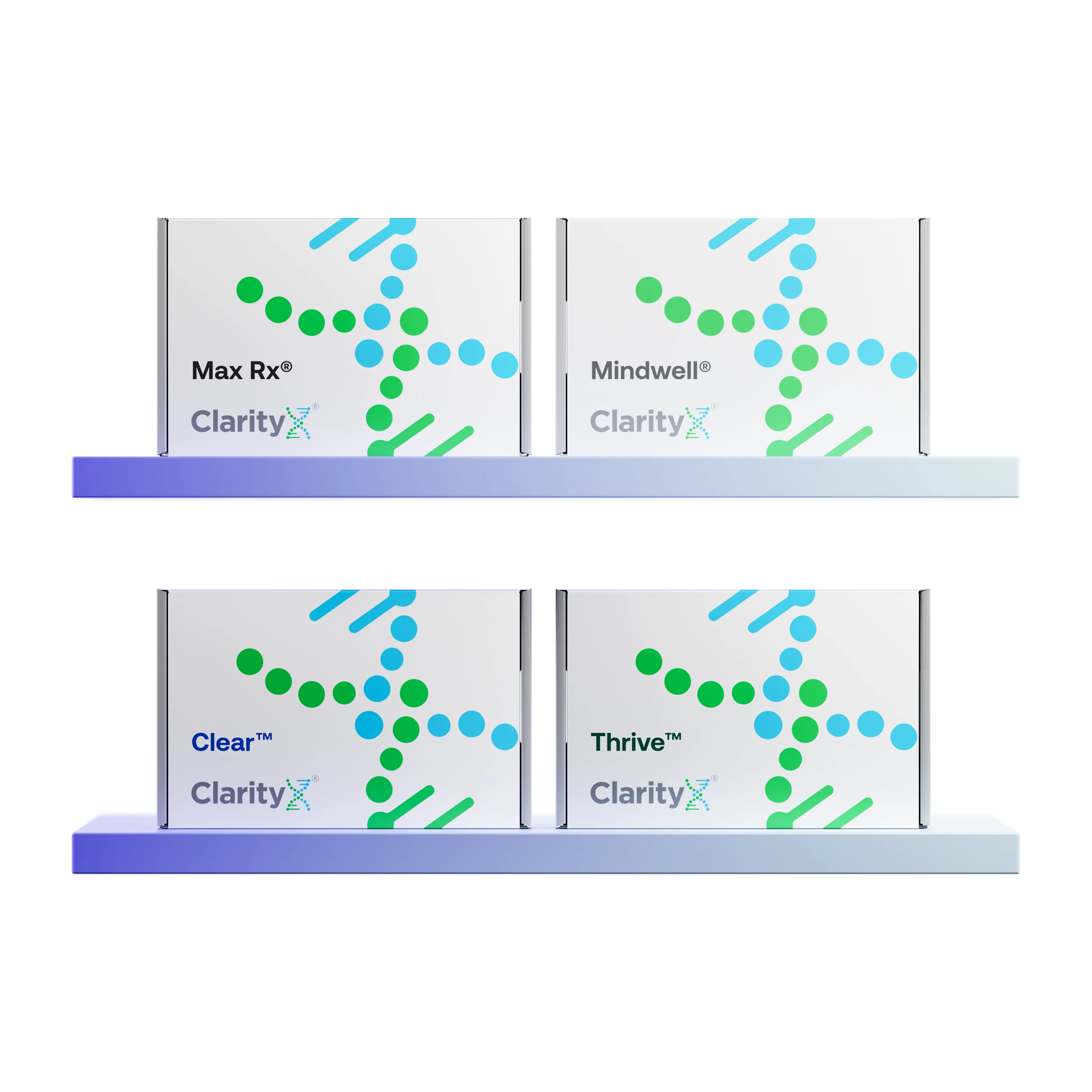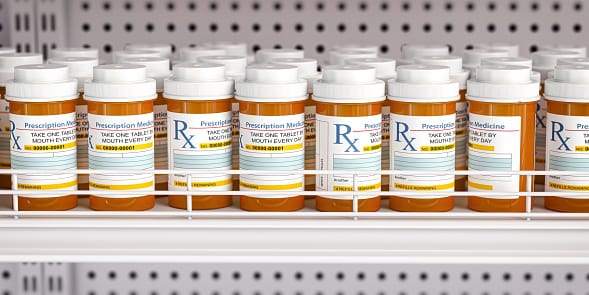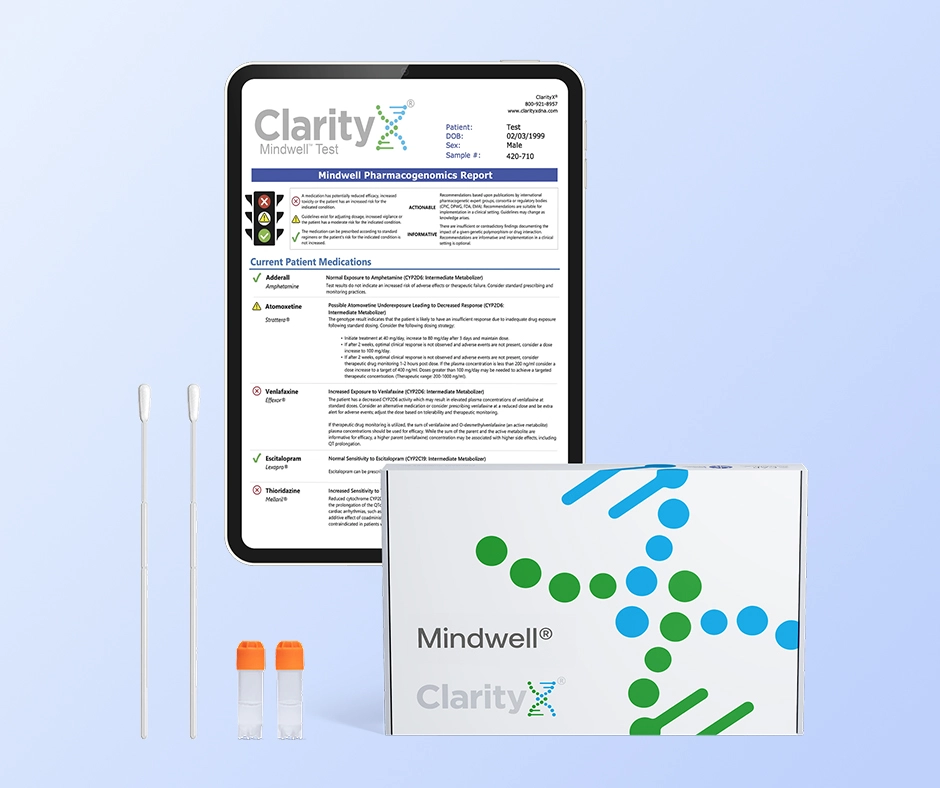Key Highlights
- The OPRM1 gene influences how the body feels pain and affects motivation and reward pathways.
- Changes in the OPRM1 gene, like the A118G polymorphism, are associated with higher rates of opioid and alcohol addiction.
- Some versions of the OPRM1 gene may change how sensitive a person is to pain and how well certain drugs, like opioid painkillers, work for them.
- Testing the OPRM1 gene may guide personalized medical treatments for pain management.
- The ethics of genetic testing for addiction risk are an important consideration, however, including concerns about privacy and discrimination.
Introduction
The world of genetics has shown a strong link between the OPRM1 gene, opioid receptors, and a higher chance of abuse of substances like opioids and alcohol. Investigating the OPRM1 gene's role in both opioid and alcohol addiction reveals how different genetic factors affect the risk of becoming addicted.
Understanding the OPRM1 Gene and Its Role in the Human Body
The OPRM1 gene is important because it helps make the mu (μ) opioid receptor. This receptor is key in the body’s system that uses natural opioids. This system affects how we feel pain, reward, and addiction.
The μ opioid receptor is the main target for natural opioids such as beta-endorphins and enkephalins. It helps control how we respond to pain. It also interacts with outside opioids, including strong painkillers and drugs like heroin.
The Basic Functionality of the OPRM1 Gene
The OPRM1 gene is encoded in DNA, which is expressed as mRNA. This mRNA acts as a guide to create the mu opioid receptor, a membrane receptor found on the surface of neurons. It allows opioid molecules to interact with nerve cells. When opioids attach to the receptors, they start a series of reactions inside the cells that can lead to changes in the perception of pain and feelings of euphoria.
This receptor is key to feeling and reacting to pain, reward, and pleasure. Changes in the OPRM1 gene can change the structure and function of the mu opioid receptor. This can affect a person’s risk of opioid and alcohol addiction.
Exploring these variations helps us understand how genes and addiction are connected.
How OPRM1 Gene Interacts with Opioids
The OPRM1 gene mediates the production of mu opioid receptors. These receptors work with two types of opioids. First, there are endogenous opioids, which our bodies make naturally. Second, there are exogenous opioids, which come from outside sources, including prescription opioid drugs like oxycodone and illegal drugs like heroin.
When endogenous opioids link to the mu opioid receptor, they usually help relieve chronic pain and create feelings of pleasure and joy. This activation process is a big part of our body's natural reward system. But when exogenous opioids attach to this same receptor, they can disrupt this system. The body may produce fewer endogenous opioids and rely more on external sources. This leads to opioid addiction.
The strong effects of exogenous opioids on the reward pathway can cause the body to adapt to their use. Over time, this can lead to dependence and addiction.
OPRM1 Gene's Link to Opioid Abuse
Research shows a clear connection between changes in the OPRM1 gene and opioid abuse. These changes can affect how mu opioid receptors work, changing how sensitive someone is to opioids.
Some gene variants can lead to a more robust response to opioids. This may raise the chance of becoming addicted. This link highlights how complex opioid abuse is. It shows that both genetics and outside factors play a role in its development.
Genetic Predisposition to Opioid Addiction
Social and environmental factors can influence opioid addiction, but our genes play a big part, too. The OPRM1 gene is very important in this genetic link.
Studies have suggested that changes in the OPRM1 gene can affect how mu opioid receptors work. This variability affects how each person feels the impact of opioids. These individual differences due to genetic variations can lead to various levels of pain sensitivity and different reactions to opioid medicines, ultimately influencing pain perception. This may even change how likely someone is to become addicted to opioids.
Knowing how these genetic factors work may provide an opportunity to improve individual therapy and minimize the risk of addiction.
Impact of OPRM1 Variants on Opioid Sensitivity
The OPRM1 gene has specific variants that can affect a person's sensitivity to endogenous and exogenous opioids. One important variant is the rs1799971 (A118G, encoding Asn40Asp) single-nucleotide polymorphism(SNP), which can change how effective opioids are at managing pain.
It may also affect the risk of developing opioid dependence. The rs1799971 variant has been associated with significantly higher rates of opioid dependence among individuals of European descent.
So, it is important to understand how OPRM1 variants relate to pain sensitivity and the potential efficacy of pain medications. This knowledge can help create better pain management plans and may also help reduce the risk of opioid addiction for those at risk.
OPRM1 Gene and Alcoholism
The OPRM1 gene does more than just affect opioid addiction. It also has a link to alcoholism. Alcohol doesn’t attach to mu opioid receptors, but drinking it causes the brain to release endogenous opioids. This affects the brain's reward pathways.
Changes in the OPRM1 gene can alter these pathways. This might make the effects of alcohol feel more rewarding, affecting how likely someone is to develop alcohol dependence.
Exploring the Connection Between OPRM1 Gene and Alcohol Dependence
The OPRM1 gene is linked to alcohol addiction and the brain’s reward system, which is heavily influenced by a chemical called dopamine. When people consume alcohol, their brain releases dopamine. This release creates good feelings, which can reinforce drinking alcohol in excess.
Changes in the OPRM1 gene may make these effects stronger. This would lead to more dopamine being released when alcohol is consumed. With more dopamine signaling, the enjoyable parts of drinking alcohol increase. This may contribute to a higher likelihood of becoming addicted to alcohol.
Genetic Markers: Predicting Alcoholism Through OPRM1
Research has found some genetic markers in the OPRM1 gene. These markers are linked to higher rates of alcoholism. They may help predict a higher risk of developing alcohol dependence.
Better screening tools may help people who could benefit from early help to avoid alcohol addiction.
Research Findings on OPRM1 Gene and Alcohol Consumption Behavior
Broad population studies have explored how changes in the OPRM1 gene relate to alcohol consumption.
Some studies show a clear connection between certain OPRM1 gene variations and more alcohol consumption or a greater risk of dependence. However, other studies have mixed or unclear results. This shows that studying how genes and behavior connect is complicated. More research is needed to understand the balance of genes and other factors that affect alcohol consumption.
Comparative Analysis of Opioid Abuse and Alcoholism Through the Lens of OPRM1
Looking at opioid abuse and alcoholism together using the OPRM1 gene gives us important information about shared genetic risks. Even though these substances are different, the OPRM1 gene is important in how our brain processes rewards and may influence our chance of becoming dependent or addicted.
Both opioid abuse and alcoholism affect the brain's reward pathways. Changes in the OPRM1 gene can significantly change how these pathways work, highlighting the close connection between our genes, brain function, and addiction.
Shared Genetic Factors in Opioid and Alcohol Addiction
Research into the genes related to addiction has shown that there are shared genetic factors for both opioid and alcohol dependence. The OPRM1 gene is important because it influences the brain's reward system.
Some variations of the OPRM1 gene can make a person more likely to become addicted to both opioids and alcohol, suggesting that there are common genetic risks behind substance dependence. Both genes and the environment work together to influence addictive behaviors. By studying these shared genetic factors, researchers hope to create better ways to prevent and treat various substance use disorders.
Diverging Paths: How OPRM1 Functions Differently in Opioid vs. Alcohol Dependence
The OPRM1 gene may impact both opioid and alcohol dependence, but it works in different ways for each substance. In opioid dependence, external opioids, called exogenous opioids, attach directly to the mu opioid receptor made by the OPRM1 gene. This connection activates the receptor strongly, leading to significant effects.
On the other hand, alcohol affects the body differently. Alcohol does not attach to the mu opioid receptor directly. Instead, when people drink alcohol, it causes the body to release natural opioids, known as endogenous opioids. These then activate the receptor.
In both instances, a reward pathway is activated. This may lead to seeking more of each substance.
Advances in Personalized Medicine: Tailoring Treatments Based on OPRM1 Genotyping
Advances in genetic research have greatly improved our understanding of the OPRM1 gene, opening new doors for personalized medicine in treating addiction. By using pharmacogenomic testing for the OPRM1 gene, doctors can find out how well opioid medications may work or who may be at a higher risk of addiction.
This knowledge helps create treatment plans made just for those at higher risk. It can also guide doctors in choosing medications that might work best for each person. This is leading us into a new era of more personalized care in addiction treatment.
From Research to Treatment: Utilizing OPRM1 Gene Information
Recent progress in OPRM1 genotyping has made using research in real-life medicine easier. By looking at a person's OPRM1 gene, doctors can learn about how well opioids may work for pain relief and whether there may be a higher risk of dependency. This understanding helps create better treatment plans.
Future Prospects: The Potential of Gene Therapy in Addiction Treatment
As we learn more about the OPRM1 gene and how it relates to addiction, gene therapy may be a promising solution for treating addiction. This new method aims to address the genetic contributors to addiction using methods like CRISPR. It could help people recover in the long-term.
Gene therapy may be able to fix or balance out the changes in the OPRM1 gene, including the “G variant.” This could lower the risk of opioid and alcohol addiction for some people. Though this approach is still being developed, it gives hope for a future where genetic factors do not prevent recovery from addiction.
Extensive research, careful ethical thinking, and thorough clinical trials are needed before gene therapy becomes a viable addiction treatment.
The Future of OPRM1 Research and Its Impact on Addiction Science
Genetic research on addiction is continually evolving, revealing new insights into how addiction works. One major trend is the focus on how multiple genes interact with each other, rather than just studying a single gene, like OPRM1.
Another important area of study is how our genes respond to our environment, including factors like stress, trauma, and social influences. Researchers are also exploring how changes in our physical surroundings can affect our genes, which may lead to new treatment approaches.
These advancements are helping us gain a deeper understanding of addiction’s complexity and pave the way for more personalized treatments.
When considering treatment options, your genetics can also play a vital role in determining which medications will be best suited for you. A simple test can help reduce the trial-and-error process associated with finding the right medication. Find out more by visiting www.clarityxdna.com
Conclusion
Understanding the link between the OPRM1 gene, opioid use, and alcoholism may help develop more effective personalized approaches for preventing and managing addiction. This research opens the door to a broader understanding of addiction and how multiple factors contribute to its development. Genetic testing may provide valuable insights to help balance the risks associated with pain management.
Frequently Asked Questions
What is the OPRM1 gene, and why is it important?
The OPRM1 gene helps make the mu opioid receptor. This receptor is important for how the body feels pain and experiences reward. Changes in this gene can affect pain sensitivity and can also influence how people respond to opioid medications. Additionally, these changes are related to the risk of opioid and alcohol addiction.
How does the OPRM1 gene influence opioid addiction?
Genetic factors linked to the OPRM1 gene can affect how likely a person is to become addicted to opioids. These factors change how the brain reacts to opioids, which affects the reward pathways. This can increase a person's vulnerability to dependence on these substances.
Can testing for the OPRM1 gene predict opioid abuse or alcoholism?
Certain OPRM1 variants have been associated with higher rates of opioid and alcohol abuse. However, it is important to keep in mind that dependency and addiction are ultimately associated with many factors.
References:
https://www.nature.com/articles/s41598-022-21003-y.pdf
https://pubmed.ncbi.nlm.nih.gov/25308352/
https://www.ncbi.nlm.nih.gov/pmc/articles/PMC3548029/
https://www.ncbi.nlm.nih.gov/pmc/articles/PMC6885558/
https://pubmed.ncbi.nlm.nih.gov/32492095/
https://pmc.ncbi.nlm.nih.gov/articles/PMC7270886/
https://www.news-medical.net/health/What-are-Endogenous-Opioids.aspx






